William Hemsworth's Blog, page 127
April 15, 2018
St. Thomas Aquinas and Christology
Thomas Aquinas is known as one of the greatest thinkers in the history of the church. He was a prolific writer, and writings are still widely read today. When it comes to Christology Aquinas had a lot to say, and his writings on Christology can be read in the third part of his Summa Theologica and his Commentary on Matthew (Lecture Notes).
His view on the incarnation was different because he assumed its necessity was hypothetical. This does not mean that it was a theory and that it did not happen, but it was only a necessity if it was something that God had planned from the beginning. Like Anselm and many others before him, Aquinas believed that nothing can coerce God. In simpler terms, did God only ordain the incarnation as a result of the fall? Or was the incarnation already put in place because God knew the fall would take place?
Through the fall man became separated from God, but through the incarnation this was remedied. It was remedied because God sought to unite humanity to himself. Though dawning a human body was below God, he loved us so much that Christ did it so we may be united with him. Aquinas delves into two kinds of necessity. The first necessity in one in which there is no way we can achieve the end. There is nothing, as humans, that we can do to satisfy the due penalty for sin. This is not possible because original sin has corrupted our very nature. The second necessity spoken of is that of man being sufficient because of the actions of another. In this case it is Christ who sustains us.
Aquinas goes on to say much more about the incarnation is section three of the Summa. He answers the question of whether the incarnation should have happened at the beginning of time, or at the end. His answer is masterful, but simple at the same time. He quotes scripture to say that in the fullness of time Christ came to save sinners. If this happened at the beginning of the world there would have been no sinners as the fall had not taken place. If it happened at the end of the world then it would have been too late for those sinners scripture says he came to save.
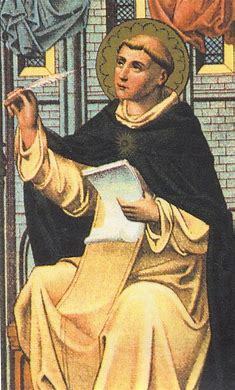
In conclusion Aquinas takes the best of those before him to assist in his Christology. He is very proud to quote from Augustine, Anselm, John Chrysostom, and many others in support of his position. His affirmed the necessity of the Hypostatic union and thinks that it is necessary for one to believe. The unity of man and God was the work of the incarnation. In the incarnation we find the love and forgiveness of God. It was the decision of God, long before time began, that the suffering of Christ would be the material element of his love for humanity.
April 10, 2018
Episode 2: Why Do Catholics Confess Their Sins to a Priest? – SoundCloud
Why do Catholics confess sins to priests? In this episode I answer some Protestant objections, cite the biblical basis, and look at confession in the early church.
Listen to Episode 2: Why Do Catholics Confess Their Sins to a Priest? by The Bible Catholic Show #np on #SoundCloud
April 5, 2018
Purgatory, Hell, and the Afterlife
One of the things that seems to confuse our non-Catholic Christian brethren is the subject of purgatory. Those who enter purgatory are guaranteed to go to heaven at some point. Purgatory is not a second chance at redemption, and nor is it a permanent destination. The church has always taught what the scriptures teach in Hebrews 9:27, “And just as it is appointed for mortals to die once, and after that the judgment” (NRSV). It is a place that individuals go who have died in the friendship of God, but who must be purified before they enter the presence of God. This is also echoed in Revelation 21:27 which states, “But nothing unclean will enter it” (NRSV).
After death each person will be judged. Immediately after death, each person’s immortal soul will be judged by God according to his/her faith and works. One may be judged worthy to go straight to Heaven, maybe to go to purgatory to be cleansed of the consequence of venial sin, or to hell for unrepentant mortal sin. It is in this regard that hell and purgatory are similar. They are both a consequence of sin, but they are vastly different because Hell is permanent, and purgatory is temporary. Heaven and purgatory are vastly different from hell because hell is eternal separation from God. Regarding this the Catechism of the Catholic Church states, “The chief punishment of hell is eternal separation from God, in whom alone man can possess the life and happiness for which he was created” (Catechism para 1035). Heaven, the resurrection of the body, and the Eucharist speak to the body culture that makes up our culture today. The answer to our youthful body obsessed culture is the true fountain of youth-the risen, immortal, glorified Christ in the Eucharist. We will only get eternal, youthful glory with a glorified body in Heaven. Jesus is this, and we are what we eat. For us to get to Heaven we must have faith in Christ and live the way he tells us to live. He tells us to be responsible for our own behavior. Christ will come again, and at that time the last judgment will commence. Jesus states in John 5:29 “and will come out—those who have done good, to the resurrection of life, and those who have done evil, to the resurrection of condemnation” (NRSV). He also comes every week in the form of the blessed sacrament to help us to endure the challenges of life and make good decisions. He gives us the very gift of himself to help us do the things he wants us to do.
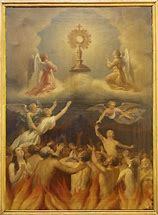
Works Cited
Catechism of the Catholic Church. Doubleday Books. New York, NY: 1995. Print.
Holy Bible, New Revised Standard Version
Episode 1: A Protestant Seminarian Converts to Catholicism – SoundCloud
The first episode of The Bible Catholic Show is available. Please listen, rate, and share!
Listen to Episode 1: A Protestant Seminarian Converts to Catholicism by The Bible Catholic #np on #SoundCloud
April 2, 2018
A Challenging Lent
This past Lent was the most challenging ever for me. My Lenten commitment was to pray the Liturgy of the Hours and seek guidance from the Lord. For the last couple years I had a successful blog, podcast, and recently landed a radio show…but there was one problem. Though I am Catholic these mediums tended to take my focus away from spreading the catholic faith.
To be fair I was still spreading Christianity, but I wasn’t focused like I should be. Towards the end of this past Lent the Lord smacked me upside the head, and told me to get my act together. The following words kept playing like a broken record in my mind: “Spread the truth about my church”. Whoa! That means starting from scratch. New blog, new podcast…everything. That radio show? Well that is on an evangelical station so that must go as well. My decision was confirmed when One of the higher ups at the station was spreading anti-Catholic propaganda on his personal page. I could no longer bring revenue to an entity that was attacking the church.
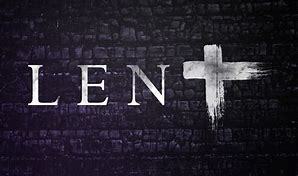
I don’t write this to get pity or to portray myself as martyr. I write it as a challenge to all of us. Is there something that we are not giving to Jesus? Are we giving him everything or are we being stubborn and think that we can do it on our own? This Lent was the most challenging Lent, but it was the best Lent ever. Prayers were answered as to what I should do with my writing and podcast. It is to spread and defend the catholic faith. May the Lord’s will be done.
March 31, 2018
The Deeds of Jesus
Every Sunday in the creed we declare that Jesus is our Lord, but what does that mean? What implications does that have on our lives? In the Gospels Jesus tells us to love our neighbor (Mark 12:31), love God (Matthew 22:37), and show mercy (John 8:11). How do his words correlate to his deeds, and what does that mean for us as his followers? This post will take a deeper look at the scriptures referenced to illustrate how the words that Christ spoke correspond with his actions.
Jesus often spoke of what we now the call the perfect commandment. Jesus spoke about loving God with all our heart and loving our neighbor as yourself. The first verse mentioned above is Mark 12:31 which states, “The second is this ‘You shall love your neighbor as yourself.’ There is no commandment greater than these” (NRSV). To love your neighbor means so much more than greeting them when they are in their front yard. Whether they treated him as he deserved or not, Jesus showed compassion to everyone (Collins 51). He healed the centurion’s servant in Matthew 8:13, St. Peter’s mother in law in Matthew 8:14, and healed a multitude in Matthew 14:14. In healing the centurion’s servant in Matthew 8:13, Jesus shows that his salvation is for Jew and Gentile alike. In addition, this was a member of the occupying government and an enemy of the Jewish people. He shows us what we must do with those we do not agree with. We must still them as people as they are created in the image of God.
To go along with loving our neighbor, Jesus tells us “Love the Lord your God with all your heart, and with all your soul, and with all your mind” (Matthew 22:37 NRSV). How is loving God a deed of Jesus? As the Son of God he is the only way to the Father, and Christ said we can only know the Father through him (John 14:6). To love God with all your heart is to go where he leads and to do what he is telling us to do. In short, we must follow his will if we love him with our whole being. Jesus demonstrated this is many ways, with the most notable being his Passion.
In the garden of Gethsemane, we see the human will of Jesus manifesting itself. He is so terrified about what he must endure that he begins to sweat drops of blood (Luke 22:44). This is a medical condition known as Hematidrosis, and occurs when an individual in experiencing extreme stress. He prayed that he may not have to endure, and this shows he is human. He was scared, and above all it means he can relate to what we go through. Though he was terrified, Christ knew his mission and because of his overwhelming love we are redeemed.
In John chapter 8 Jesus encounters a group of Pharisees who are circling a woman and looking to stone her for the sin of adultery. According to Leviticus 20:10 this was the consequence for such an action, but adultery takes two people. The woman was about to get stoned, but where was the man? It is speculated that the man was in the crowd that was wanting to stone the woman, and this was a way to trap Jesus. He knew what was going on, and said if someone present has never sinned then he could throw the stone (John 8:7). Jesus told her to stop sinning, and did not condemn her. He forgave her for the sin by saying “Neither do I condemn you. Go your way, and from now on do not sin again” (John 8:11 NRSV). Jesus showed mercy and did not just talk about it. We see this several times in the Gospels, but this example is significant as the penalty was death for such a sin. He gave the woman a new life and hope, and tells us to do the same.
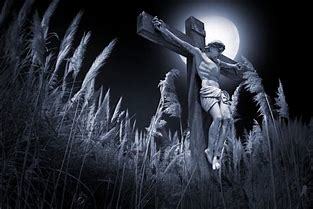
Works Cited
O’ Collins, Gerald. Jesus: A Portrait. New York: Maryknoll, 2013
March 28, 2018
The Importance of the Resurrection
Every Easter we celebrate the resurrection of Christ. It is the foundation of our faith, and without the resurrection are faith is futile (1 Corinthians 15:14). Beyond proving that Jesus is the Christ, what does the resurrection prove? The resurrection is about much more than the eyewitness accounts of the Apostles seeing the risen Jesus. It is also about the new life that is present in every believer throughout time.
We have finite minds, and it is hard for us to grasp the miracle that is the resurrection. Jesus is a divine being, and as a divine being he resurrected from the dead to prove who he was. Though theologically true, this view leads to a somewhat simplistic understanding of the event. The resurrection can also be seen in the transformation of the believer. It is about the new life in Christ and not what the ocular vision of the disciples has perceived. Saint Paul also echo this sentiment in 2 Corinthians 5:17, “So if anyone is in Christ, there is a new creation: everything old has passed away; see, everything has become new” (NRSV).
The resurrection is a religious experience of one who has come to faith in Christ, and is much more than something that happened to those who physically encountered the risen Christ. According to Scholars such as Luke Johnson this is a common theme in the Pauline Corpus. Regarding this Dr. Johnson writes, “The resurrection experience, in Paul’s letters, is not something that happens to Jesus alone” (Johnson 25). Every Christian with a genuine faith in Christ experiences the resurrection in a special way through baptism. Through the sacrament of baptism original sin is wiped away, and we are raised in the newness of life.
Within the context of introducing the resurrection to Christian audience there are a couple of things to keep in mind. From an apologetics standpoint, it is important to know the reasoning as to why the resurrection is the foundation of the faith. One can go into the martyrdom of the early church because they were attesting to the resurrection. People do not die for a lie.
Secondly, it is more important to assist the audience in learning to relate to the resurrection in a deeper way. A way that is more personal, and something that they can share. Everyone has something deep in the recesses of their mind that they are ashamed of. It may be an addiction, adultery, or a gambling problem. These things are destructive, but when one comes to faith those things are in the past. They still may struggle, but through Christ they are resurrected and forgiven for those things that they have done. Those types of experiences are the modern-day equivalent of the disciples physically seeing the resurrected Jesus. Our former selves are dead and gone, but we were resurrected spiritually into a new creation. The disciples’ experience of Jesus raised and exalted is the difference between their faith in the gospel.
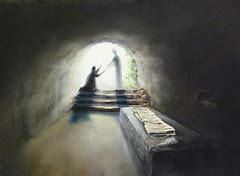
Works Cited
Holy Bible, New Revised Standard Version
Johnson, Luke Timothy. “How Jesus Became God” Commonweal. 2/3/2015. Web. 22 Feb. 2015.
March 26, 2018
Called to Communion
Within Christendom Ecclesiology is looked at in a variety of different ways. Within Protestantism the church may be seen within a synod, a presbytery, or an autonomous unit. Within Catholicism Ecclesiology revolves round the sacrament of the Eucharist and those who are in union with the Bishop. This is what is known as communion ecclesiology. In this paper, the development of communion ecclesiology will be seen from sacred scripture, the church fathers, and councils.
From its humble beginnings, the church has taught the centrality of the Eucharist. There are those that say that this practice started later within the church’s history, but its roots can be found within the pages of sacred scripture. Saint Matthew, Saint uke, and Saint Paul both write about the institution of the Eucharist at the last supper. In Matthew 26:26 Matthew writes, “And whilst they were at supper, Jesus took bread, and blessed, and broke: and gave to his disciples, and said: Take ye, and eat. This is my body (Douay-Rheims).” Saint Luke’s account in Luke 22:19 we read very similar language, “And taking bread, he gave thanks, and brake; and gave to them, saying: This is my body, which is given for you. Do this for a commemoration of me (Douay-Rheims).” In koine Greek, the language of the New Testament these inspired writers use the word esti. This one word is so significant because reiterates what we read in the english translations. According to Strong’s concordance this word is translated into English as is, are, consists, and come.
In short, this word contains the whole of communion ecclesiology. In the original language, our Lord said that the bread and wine are his body. He did not say that they are like his body, or are symbolic of his body. Saint Paul takes it a step further in 1 Corinthians to remove any doubt about the real presence of Christ in the Eucharist. In chapter eleven of 1 Corinthians he writes that he received the words from Christ himself. The church at Corinth had been treating the Eucharist in a very irreverent manner. People were feasting, and there were some who were unable to participate. As if that were not bad enough, there was also a man who was having sexual relations with his stepmother (1 Corinthians 5:1). By acting in this manner this individual broke communion and was no longer in union with the church.
The theme of communion ecclesiology is continued in the ministry of the early church fathers. The patristics have a lot to say about the centrality of the Eucharist and the authority of the bishop. Saint Ignatius of Antioch paragraph twenty of his letter to the Ephesians writes, “Come together in common, one and all without exception in charity, in one faith and in one Jesus Christ, who is of the race of David according to the flesh, the son of man, and the Son of God, so that with undivided mind you may obey the bishop and the priests, and break one Bread which is the medicine of immortality and the antidote against death, enabling us to live forever in Jesus Christ.” Also in his letter to the Philadelphians St. Ignatius states, “Take care, then, to use one Eucharist, so that whatever you do, you do according to God: for there is one Flesh of our Lord Jesus Christ, and one cup in the union of His Blood; one altar, as there is one bishop with the presbytery and my fellow servants, the deacons.”
St. Ignatius makes it clear that it is the Eucharist is of vital importance to the Christian faith. The Eucharist can only be consecrated by someone who is ordained in Apostolic Succession. He must be in communion with the bishop and hold that the Eucharist is truly the body and blood of the Lord Jesus Christ. In regard to this Saint Pope John Paul II writes, “This explains the lively concerns which finds authoritative expression in the work of the Councils and the Popes (Ecclesia de Eucharista, 9).”
Throughout history we can see the role that communion ecclesiology has played in fighting heresy. In the second century, the Gnostics claimed to have secret teaching that they received directly from the apostles. The Gnostics believed all matter to be evil, and since the eucharist consisted of matter they opted to abstain. In his pivotal work, Against Heresies, St. Irenaeus outlined what became known as the rule of faith. St. Irenaeus writes, “The Church, though dispersed throughout the whole world, even to the ends of the earth, has received from the apostles and their disciples this faith (Roberts 486).” To be validly part of the universal church, it was understood that one had to be under the authority of the bishops in apostolic succession. He goes on to say that although language vary, the traditions and teachings of the church remain the same.
As if this were not enough to deduce that the Gnostics were not in communion he goes to the Eucharist. Regarding the Eucharist St. Irenaeus writes, “But our opinion is in accordance with the Eucharist, and the Eucharist in turn establishes our opinion. For we offer to Him His own, announcing consistently the fellowship and union of the flesh and Spirit (ccel.org).” These are only a sampling of Irenaeus’s treatises, but they establish that the church had an understanding of what it meant to be in communion.
Throughout history there have been those who challenged this communion. As a result, they broke away and developed various ecclesiological systems that were vastly different from what has been passed down in the church. We are rapidly approaching the 500-year anniversary of the Protestant Reformation. This development caused a division in the church, and at the heart of this divide was authority.
As previously stated, one of the components of communion ecclesiology is the apostolic succession of the bishopric (CCC, para 1142). The church is visible institution with validly ordained clergy who administered the sacraments for the faithful. However, the concept of a visible church was one that did not sit well with the reformers. In their eyes, the church was an invisible entity and made visible only by the work of its members. In describing this concept Dr. Christopher McMahon writes, “Although Luther and Calvin, the two patriarchs of the Reformation, disagreed on many issues, including substantial ecclesiological issues, they both agreed with their predecessor, Jan Hus, on the theological emphasis on the primacy of an invisible church (McMahon, 63).
The Council of Trent set out to combat the teachings of the Reformation, and to address certain reforms within the church. As previously stated, the reformers grew to distrust the established institutional structures of the church. As a result, they said that the church was made up of believers who were truly converted. By all accounts to council was successful in its aims, and reiterated the historic teaching of a visible institutional church (McMahon, 66). One prominent figure during this era was Cardinal Bellarmine, and he addressed the topic of the visible church quite well. He wrote in his treatise De Controversiis, “Our view is that the church is only one reality, not two, and that this single and true reality is the group linked by profession of the same faith and by communion in the same sacraments (McMahon, 66).”
This concept of communion ecclesiology has been carried on into our own time. The second Vatican Council addressed this issue in a number of areas, and Saint Pope John Paul II addresses it at length in his great encyclical Ecclesia de Eucharistia. In that document, the Holy Father discusses how our baptism is renewed whenever we partake of the Eucharist. By doing so we are entering into sacramental communion with each other (Ecclesia de Eucharistia, para 22).
In the second paragraph of the Council document titled, Unitatis Redintegration, the council fathers state, “In His Church He instituted the wonderful sacrament of the Eucharist by which the unity of the Church is both signified and brought about (Decree on Eucumenism, para 2). This statement is strengthened by other council documents such as the decree on Ministry and Life of Priests. In article six of that document the council fathers discuss how no Christian community can be built unless the Eucharist is at the center of it.
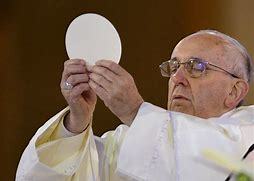
CONCLUSION
Communion ecclesiology, as Pope Emeritus Benedict the XVI states, “is in its inmost nature a Eucharistic Ecclesiology (Ratzinger, Kindle location 1634).” Throughout its history the church has rallied around the Eucharist as the pinnacle of Christian worship, and has taught that this same Eucharist can only be administered through those in communion with the Bishop. The Bishop in this case is the Holy Father, the Bishop of Rome. Through this communion we can confidently know what has been taught by the apostles, and how to live the Christian life.
WORKS CITED
Catholic Church, Catechism of the Catholic Church, 2 ed. New York: Doubleday, 2003. Print.
McMahon, Christopher. Called Together: An Introduction to Ecclesiology. Winona, MN: Anselm Academic, 2010. Print.
Pope John Paul II. Encyclical on the Eucharist in Its Relationship to the Church Ecclesia de Eucharistia
Ratzinger, Joseph. Pilgrim Fellowship of Faith: The Church As Communion. San Francisco, CA: Ignatius Press, 2005. Ebook.
Roberts, Alexander, James Donaldson, and A. Cleveland Coxe, eds. The Apostolic Fathers with Justin Martyr and Irenaeus. Vol. 1. Buffalo, NY: Christian Literature Company, 1885. Print. The Ante-Nicene Fathers.
Tanner, Norman ed. Vatican II: The Essential Texts. New York: Image Books, 2012. Print.
March 25, 2018
Brief Analysis (Very) of the Gospel of John
The Gospel of Saint John is very unique in that it does not rely on a primary source. It varies greatly from the synoptics who relied heavily on Mark’s Gospel. However, John is unique and mentions many events that do not appear in the synoptics. The style of the Gospel is simple yet carries great theological depth. This is of course no accident, and the John knew exactly what he was doing with his precise arrangements and wording.
The Gospel starts with a prologue that “encapsulates John’s view of Christ” (Brown, page 337). John 1:1 quickly establishes the author’s intent. John 1:1 states “In the beginning was the Word, and the Word was with God, and the Word was God.” This parallels Genesis 1:1 and establishes that Christ existed from the beginning of time. In fact the next few verses of the text go into that in more detail. The prologue goes to great detail to unveil the divinity of Christ. David Black states “John’s Gospel begins with a prologue that declares the preexistence and incarnation of Jesus as the word of God” (Black, page 159).
As previously the poetic undertones of the Gospel, especially the prologue, paint vivid images in the mind of the reader. This would have been especially true in the mind of a Jewish reader. One versed in the great details of the Old Testament would not miss the parallels that John was presenting. According to Brown “This poetic description of the decent of the Word into the world and the eventual return of the Son to the Father’s side (1:18) lies in the Old Testament picture of personified Wisdom (especially Sirach 24 and Wisdom 9)” (Brown, page 338).
This very important introduction to the Gospel is interrupted two times by the insertion of John the Baptist. He is mentioned as the one who will come before Jesus. The ministry of John the Baptist was related to Christ’s in that He was preparing the way. He was getting the people ready. His testimony of Jesus is given just eight verses later and sets the tone for the rest of the Gospel.
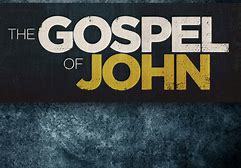
Works Cited
Brown, Raymond, An Introduction to the New Testament. New York: Doubleday, 1997
Gospel of John, New American Bible
Lea, Thomas D., and David A. Black. The New Testament: Its Background and Message. 2d ed. Nashville, TN: Broadman and Holman Publishers, 2003
March 23, 2018
Cardinal Newman and the Development of Doctrine
After reading Cardinal Newman’s “The Development of Ideas” I came to the conclusion that ideas and doctrine do not just come about. They started from an idea that was debated, was allowed to germinate, and must be allowed to mature. This can only be done through debate and reason. What is interesting is that this work was the turning point of Newman to Catholicism. As many do he started as an evangelical, then Anglican, and finally seeing the ideas and doctrines that had matured, became a great asset to the Catholic Church.
Newman explains that at first man will have an idea, but will not be sure how to explain. He may seem like a babbling fool unable to make a coherent point about the idea. However over time something will be brought to light that will move the idea forward. This new fact will be debated and judged by many, and after a time there will be something definite that comes from it. Over time there may even be various views on the same subject, but there will be a definite teaching that came from the original idea. History will show that great teachings of history can be boiled down to its original idea and this helps us understand it all the more.
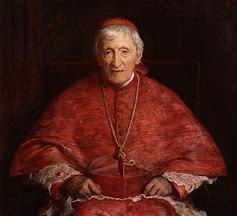
This process, especially in terms of doctrine, can take a lot of time to develop. It has been shaped and formed from many brilliant people with their own take on it. We all have different experiences and an idea may mean something different to different people. The ideas that came from the great councils of our church are great examples of this. All the Bishops gathered together with their own input, and the Holy Spirit guided them in defining doctrine. There was much debate and everyone learned from another.
You can read Cardinal Newman’s full essay here.
William Hemsworth's Blog
- William Hemsworth's profile
- 7 followers



